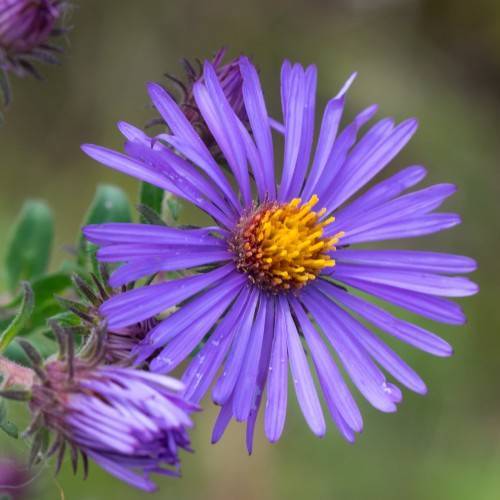
southern prairie aster
Eurybia hemispherica
Cycle:
Herbaceous Perennial
Watering:
Minimum
Hardiness Zone:
6 - 9
Flowers:
Flowers
Sun:
Full sun
Leaf:
Yes
Growth Rate:
Low
Maintenance:
Low
Drought Tolerant:
Yes
Salt Tolerant:
Yes
Care Level:
Moderate
watering
Southern prairie aster prefers moist soil during the growing season and can withstand some dry periods. For best results, water plants frequently and evenly. During the hottest, driest days, keep the soil evenly moist. On cooler days, allow the soil to dry out more between waterings. Too much moisture may lead to root rot, so be sure to check the soil before watering. With regular watering, southern prairie aster may be watered once a week, or every 5-7 days. For larger plants or in areas of high heat, twice a week may be necessary.
sunlight
Southern prairie aster requires a minimum of 6 hours of sunlight per day during the growing season in order to bloom and thrive. This species grows best when planted in a location that offers direct sunlight for most of the day. Morning sunlight is essential for the plant's growth, while afternoon shade is best to avoid scorching the flowers. For optimal blooms, southern prairie aster should receive full sun anytime between the hours of 9 am to 5 pm.
pruning
The best time to prune a Southern Prairie Aster plant is in late winter or early spring before the plants start actively growing. Pruning should be limited to controlling the size and shape of the plant, and only lightly pruning its flowers. Its stems can be lightly trimmed to increase the branching of the plant, but 1 should take care not to remove more than 1 third of the overall height. If the plant has become leggy or overgrown, it can be cut back to the ground. This will help keep the plant healthy and promote bushiness.
